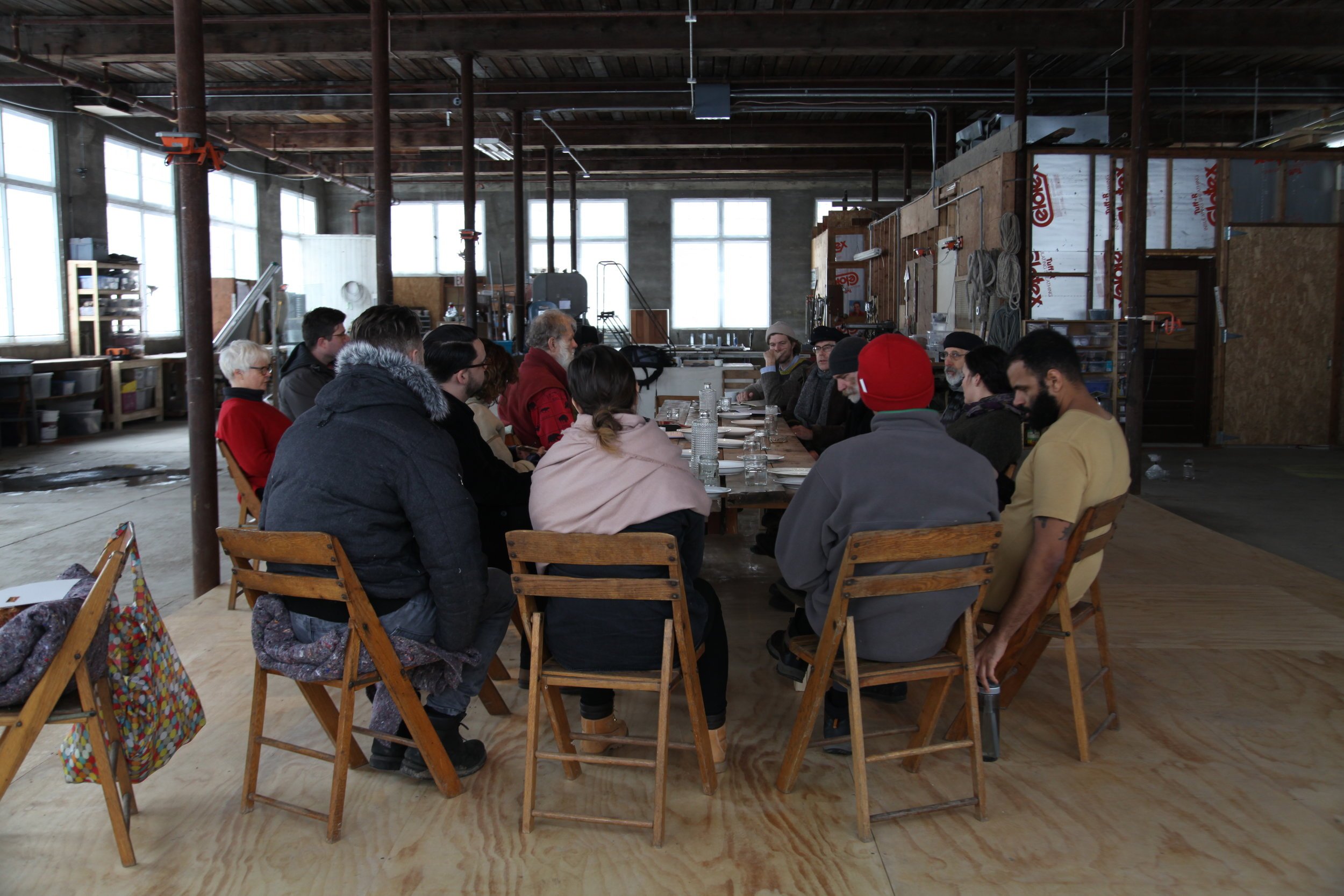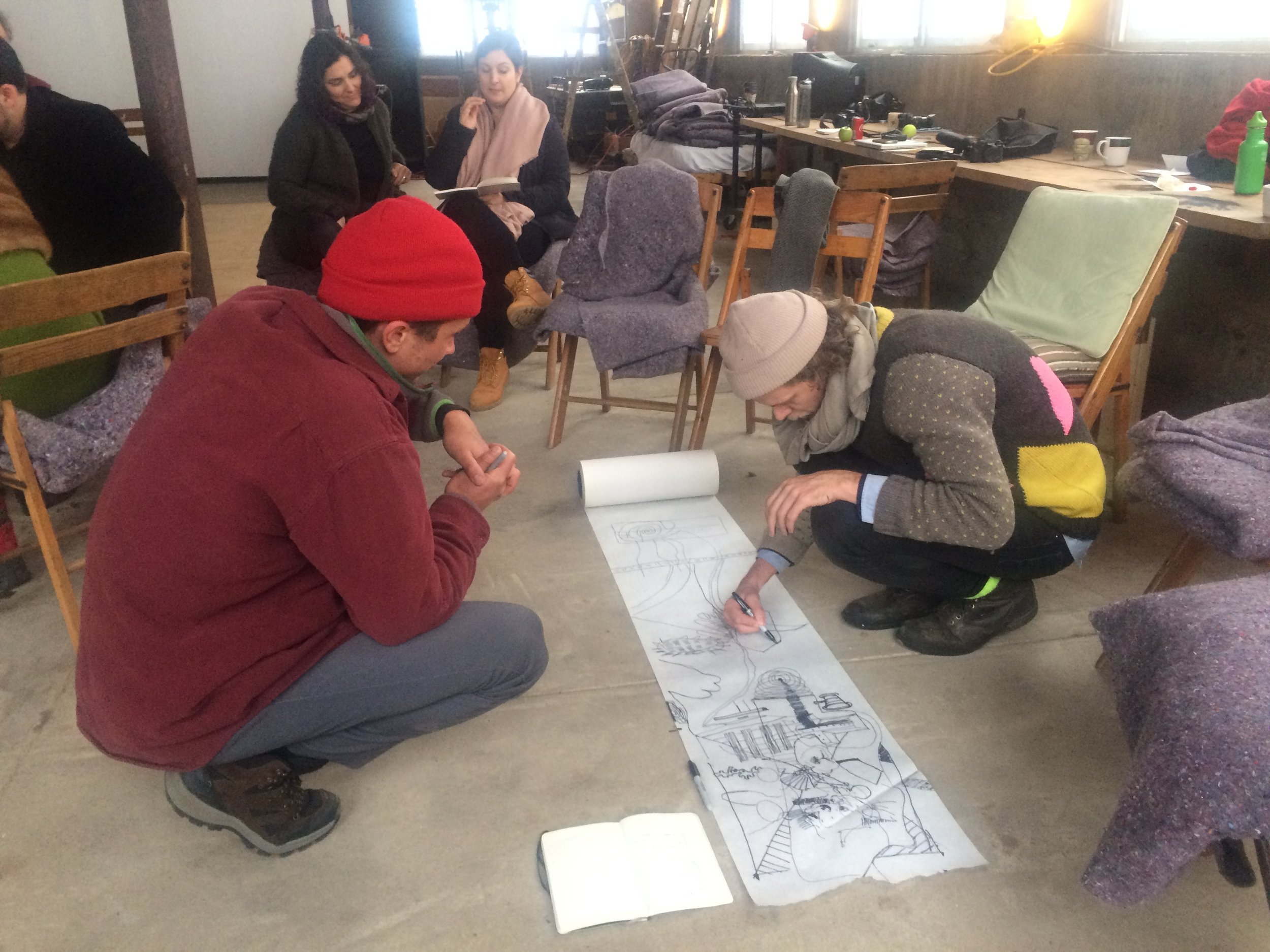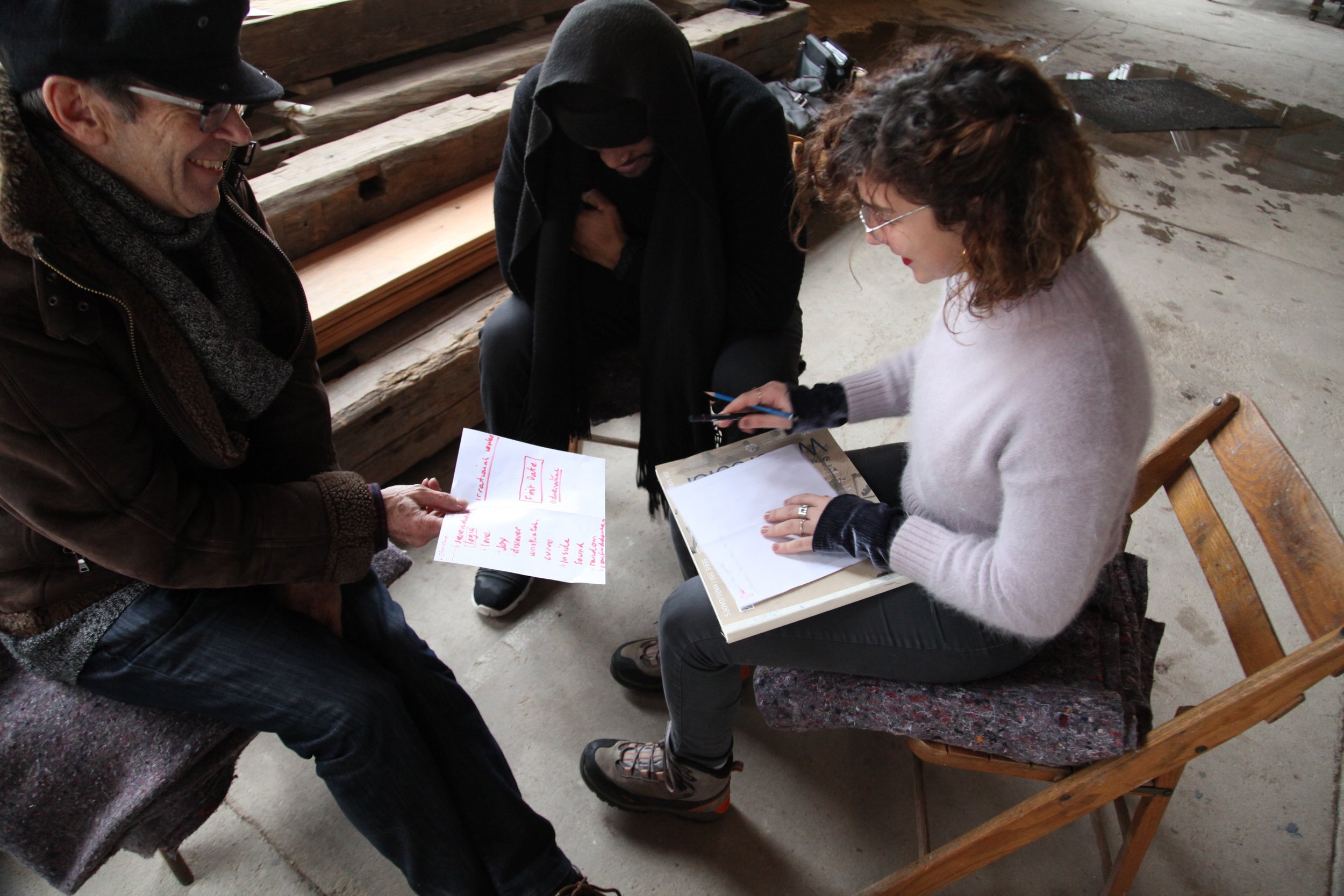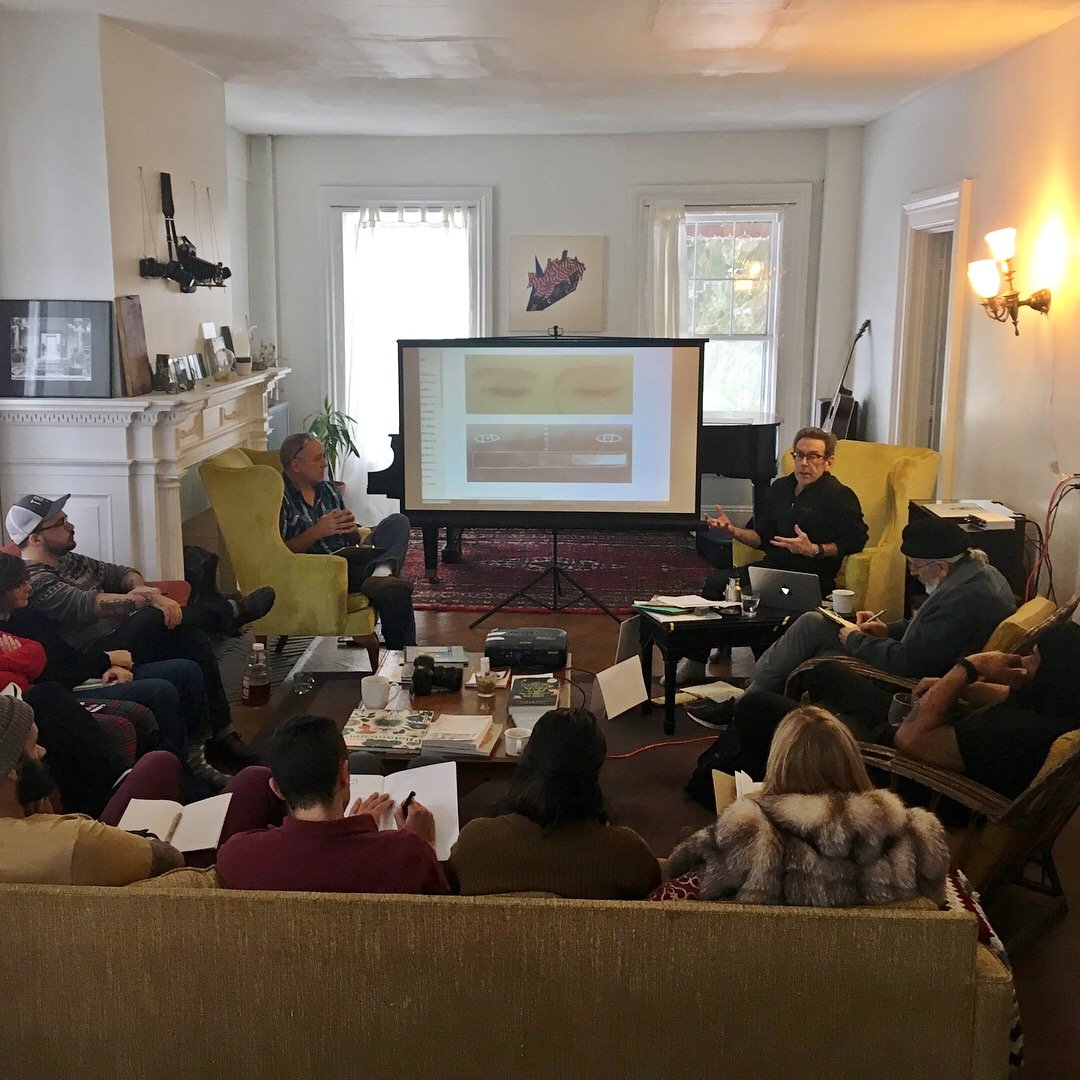Deciding to See
January 13th, 2018
Averill Park, NY, United States
The first of ALN Session series, Deciding to See brought together individuals from across arts, sciences, social media and music to explore how, in our efforts to understand complex conditions, we may do more than just look into reflections of ourselves. ‘Seeing’ is not an input phenomenon. What comes from the retina is about 15% of the totality of conscious seeing, the rest of which is constituted by what exactly? This can be summed up by the difference between ‘deciding what to look for and finding that’ and ‘attempting to look for what may be possible to find’, which are very different experiences. The session was aimed at encouraging participants to feel and understand more about their own areas of practice.
Chris Rose is a Senior Critic in Architecture and Design at Rhode Island School of Design, and a Fellow of the Royal Society of Arts, London.
Working with language, drawing, and the aesthetic nature of the many perceptual dimensions human beings bring together, it is possible to ‘see’ more fully and experience the shared insight that characterizes creative experience and leads to new knowledge. In the session we shared examples of the way Chris has developed research activities in the broad field of ‘design in a living material world’, including human embodied cognition, conscious visual experience, and creative freedoms in education.
Chris brings his vision for 'seeing' things in different ways into many disciplines and for many purposes, all related to developing how we live and work for the better of all. Currently Chris works at Rhode Island School of Design as researcher, teacher, and advisor. His work in Australia frames connections between sustainable design, Aboriginal ways of knowing and Biomimetics– learning from nature.
The session took place over a full week with plenty of time for participants to develop their personal and collaborative works in the facilities of ALN. The week was structured around three themed seminar presentations together with personal tutorials and a concluding ‘listening critique’ with Director David Gersten and ALN Fellows and Visiting Artists.
1 - Colour Vision | Biological vision in general has evolved and re-evolved in multiple forms, each appropriate to different ecologies. Human vision is capable of resolving the most remarkably challenging aspects of perception, a consequence of our being immersed and active within a broad electromagnetic spectrum that connects us with our ecologies, both actual and conceptual. We explored multiple aspects of this including higher order processing and how time becomes compressed into subjective visual experience.
2 - Sound Day | We listened to and considered what could be called the ‘grammatical structures’ of sound and listening, to appreciate the possible grammatical structures of our own experience and how this influences the narratives we employ about ourselves. This phenomenon assists us in the construction and sharing of understanding itself. From the Australian Bush to the urban soundscape, we considered sound, speech, music and prosody, spoken and written language, timbre and identity. Conscious visual perception is enabled by all senses acting in concert; hence thinking about sound, touch, proprioception and the other sense will help will help us to see.
3 - Vision Part II | At last Focus, Defocus,Target, Ambient, movement in space, cognitive blindness and enhancement. Experiencing Time compression and expansion. The compound structure of conscious visual experience. This tied together the idea concept behind Deciding to See:
Deci = the act of making a cut or slice (‘making the cut’ as in film editing)
ing = doing, acting
to = towards, not from
see = ‘see’, ‘perceive’, ‘observe’, ‘notice’
(‘I see’ = epiphany)















































